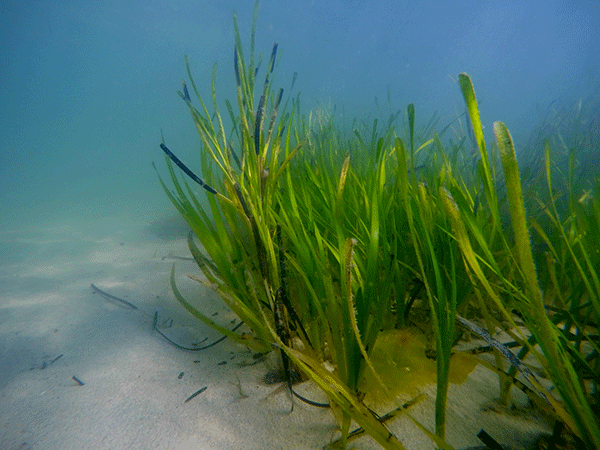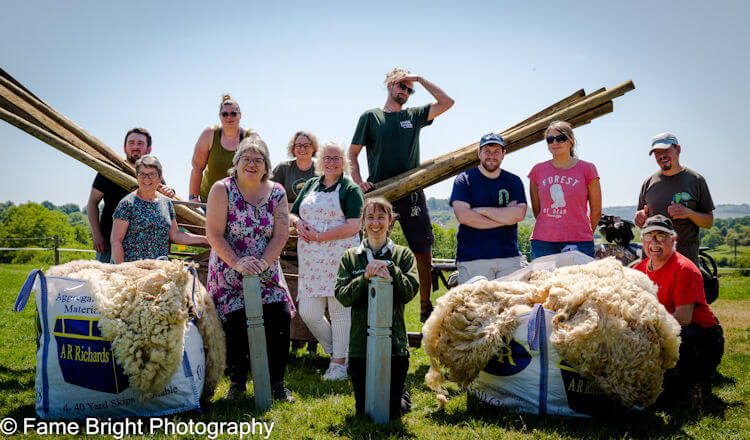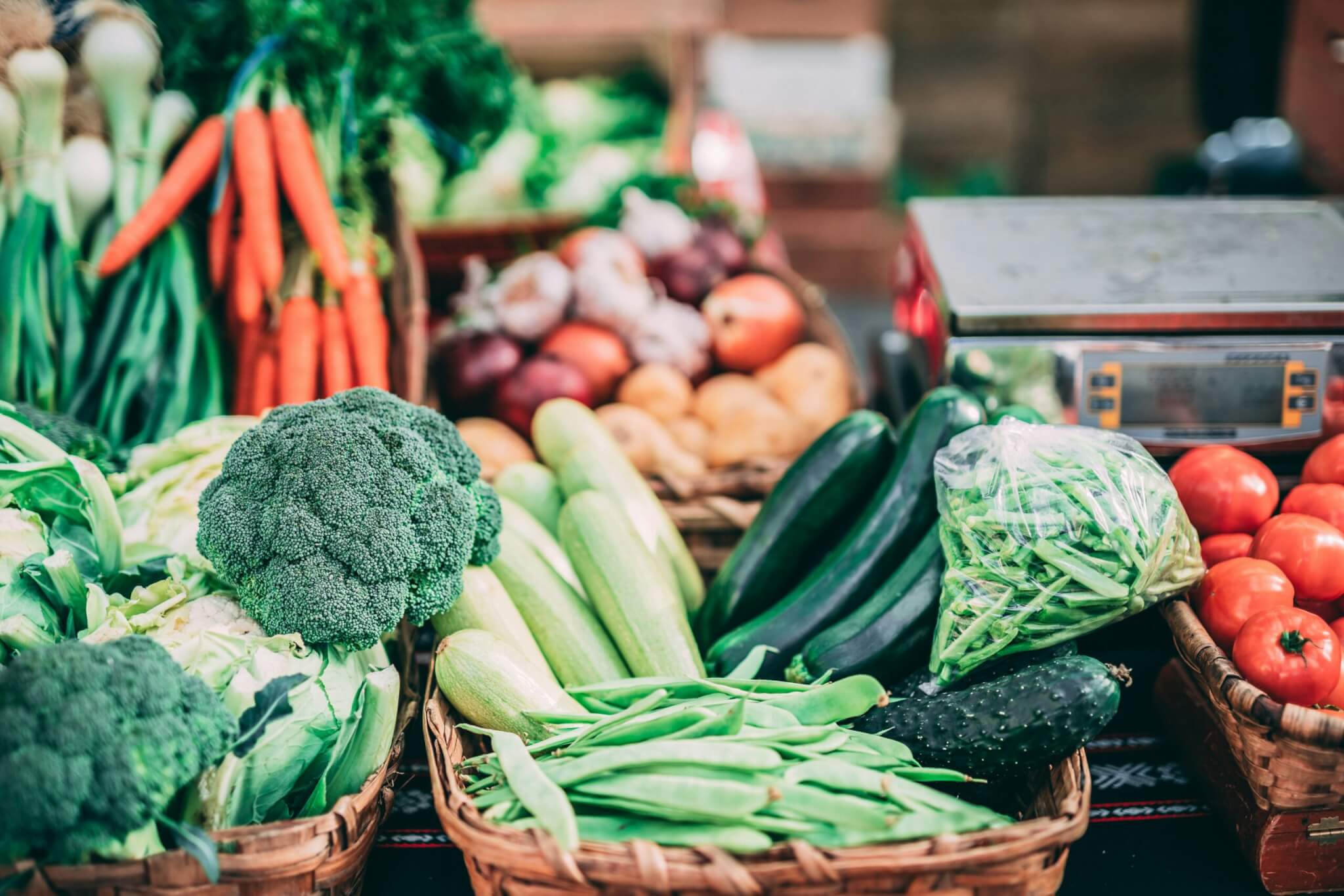Net zero is the buzzword for 2021. This week’s Earth Day, a PR exercise at the best of times, is a case in point with another raft of companies pledging their roadmap to the elusive goal. Meanwhile, as the next global climate talks approach with COP26 in November, the UK as the host nation is under pressure to show green leadership.
The concept is to produce zero carbon emissions, by reducing your own as far as possible and then offsetting the remainder. But the practicality, in anything from calculating to regulating, is deeply flawed. As founder of organic veg box company Riverford, Guy Singh-Watson, put it recently: “If someone tells you that they will reach net zero, I urge you not to be impressed until they have told you how.”
The first obstacle is calculating emissions. The global Greenhouse Gas Protocol splits emissions into three ‘scopes’, or levels; a basic detail that’s missing from the vast majority of net zero pledges.
Scope one means the direct carbon emissions from a company (i.e. their own vehicles or generators). Scope two accounts for electricity usage. Scope three is everything else, which for a business that buys, sells and delivers goods, can cover anything from food waste to emissions from overseas factories.
“It’s hard to hard to envision a responsibility for carbon that doesn’t include all the orders that you’re placing for raw materials and from factories. If you just hold businesses accountable for the things directly related to their corporate operations, you’re missing 90 to 95 per cent of the impact,” explains Austin Whitman, chief executive of Climate Neutral, a US-based carbon neutral certifier that requires scope three emissions to be eligible for its scheme.

Once a company arrives at a carbon footprint figure and reduces that by as much as it possibly can, what it chooses to do next is just as complex. Offsetting is often linked to tree planting, which can be a problem for various reasons including the types of trees, the length of time they take to store carbon and the amount of land required.
But there are other natural habitats that also store carbon, alongside other ‘co-benefits’ like restoring nature and biodiversity, a crucial factor in tackling the parallel crisis in ecological and species declines.
Blue carbon
One of the single biggest carbon stores on earth is the ocean, and research is growing on the possibilities associated with so-called ‘blue carbon’ captured in marine ecosystems, such as the deep seabed, kelp forests, seagrass meadows, estuaries and the water itself.
Cornwall-based charity Surfers against Sewage (SAS), which campaigns on the climate and ocean emergencies, is clear of the possibilities of storing carbon in the sea, alongside a major caveat about the risks of offsetting.
“Blue carbon is the most effective, yet overlooked, method for long-term carbon sequestration. For example, tidal marshes store carbon in the soil, several meters deep, at a speed two to four times greater than a mature tropical forest,” explains SAS campaigns officer, Elsa Pullman.
But she adds: “At SAS we believe that offsetting should only be used to offset the residual carbon emissions that cannot be prevented. Offsetting is often perceived as something organisations can do instead of cutting emissions. Whereas carbon sequestration is vital for tackling the climate crisis and should be seen as a nature-based solution to the climate crisis, not just an excuse to carry on emitting GHGs,” she adds.
Seagrass
Seagrass is a marine flowering plant found in shallow, sheltered areas of the UK’s coastal waters, which stores carbon in its roots. As older plant tissue dies, this becomes trapped in the complex structure of a seagrass meadow before eventually making its way to the seabed where it can remain for thousands of years. As a result, seagrass meadows play a vital role in carbon storage, but the UK has lost 92 per cent of this unique habitat in the last century, according to conservation group Project Seagrass.

“This catastrophic loss has been attributed to poor water quality, historic mining activity, fishing activities and coastal development,” explains conservation officer, Bethan Thomas. And as well as its carbon storage potential, restoring these meadows has many other benefits.
“Through sequestering carbon, seagrass acts as a buffer against ocean acidification,” says Thomas. “Seagrass meadows in the UK are home to an estimated 50 species of fish and act as a nursery ground for juvenile fish, including commercially important species such as cod, pollack and whiting.”
The potential is impressive, and researchers at the universities of Swansea and Portsmouth are looking at how carbon accumulates in seagrass and to develop a valid calculation method. But Thomas echoes a similar stance to SAS and says: “We take the view that offsetting should be a last resort. Carbon offsetting schemes are useful while infrastructure transitions to low- or zero-carbon operations but they must not be used as a free pass for inaction and ultimately measures must first be taken to avoid or reduce emissions in the first place,” she says.
Wetlands
The UK’s tidal marshes and wetland areas offer another natural habitat where carbon can be stored alongside other valuable ecosystem benefits.
Carbon from the estuary or plants is buried after every tide, leaving behind a new layer of organic carbon-rich sediment that, thanks to the damp conditions, is stored rather than decomposing, says the Wildfowl and Wetland Trust (WWT), which is working with Manchester Met University on a project at Steart saltmarsh in Somerset.

The project found that the marsh stores 10,000 tonnes of carbon every year, with other benefits including reducing flood risk, providing space for nature and supporting biodiversity.
“There is potential to create wetlands such as saltmarsh to help meet carbon targets,” says a recent report, while head of policy and advocacy, Tom Fewins, adds: “Wetlands are critical blue infrastructure we can be putting in place now to reduce climate impacts and increase our resilience.”
Peatlands and hedges
According to a new report by Natural England this week, peatlands are the largest carbon stores in the UK and can continue to absorb carbon indefinitely if in healthy condition. Conversely, if they are disused, or used for agriculture, the release of carbon back into the atmosphere is extremely high meaning they become a source of emissions.
Hedges are also described in the report as “effective at storing significant amounts of carbon”, but tend to cover a smaller area and are cut regularly, limiting their impact.
Offsetting through restoring the above habitats may be an alternative to the vagaries of carbon trading or buying credits to fund projects in far-distant places. At the very least, there is merit in proximity to UK habitats that brings at least some transparency into the chain.
But there is still a challenge in how to calculate carbon for offsets, as Dr Daniel Lash, senior research fellow at the Centre for Energy and the Environment at the University of Exeter, points out: “They’re quite different things – water, peatlands, trees – and the data can be open to interpretation when you drill down into it.”

Lash says The Woodland Carbon Code is one of the most robust verifiers of carbon calculation, and while there is a move to get something similar for peat, the scheme currently only applies to trees. “You only really start thinking about offsetting when you literally can’t reduce any further,” he adds.
Electric infrastructure
For others, the sheer urgency of a climate changing even within this lifetime means any green investments raised by offsetting should be used for large-scale rollout of decarbonising infrastructure. “Something that we would like to see is a whole lot more acceptance of carbon finance as a way of decarbonising, in particular the energy sector,” says Whitman, of Climate Neutral.
While the wheels of dubious carbon finance are already in motion, Whitman remains positive about its impact. “Our view of offset is it’s a proxy for a price on carbon that every company should be paying,” he says. “I think we have to think about this mechanism as a way of getting projects that will transform the global economy to happen, and not just planting a tree somewhere in Brazil.
“The reality is emissions are globally heading up two to three per cent per year and they need to be heading down eight per cent per year. And to make that happen we need to be investing in everything right now immediately.
“There’s not enough land to plant enough trees. The investments that need to happen are much broader in electrical infrastructure,” explains Whitman, who says that after a career in finance, economics and environmental law and despite the flaws in the carbon sector, he can’t justify working on anything else.
“I think people do a great job of identifying and acknowledging the scale of the problem but do a rotten job of identifying the bigness of the solution. To put it in pandemic terms – it’s like we’ve identified this global pandemic, but we’re going to start treating it one village at a time. If your inoculation program is 100 people a day, of course you’re never going to get control of it. The same is true of carbon.”
No easy answer
There is no easy answer to how companies, organisations or countries should, or can, achieve net zero. But there is some hope in how some of the biodiversity projects used on that journey could provide a real recovery for nature.
And for consumers looking to the brands they buy from to make a difference, the time is now for pressure, but also for questions.
So you’re aiming for net zero?
- Ask companies what scope of emissions they measure: one and two cover only direct emissions or electricity, whereas scope three accounts for everything that a company makes, buys, wastes, sells or ships.
- Insist on reduction. Ask what they are doing to reduce emissions and by how much.
- Look carefully at offset projects on a case-by-case basis; who is verifying it, does it have any other positive (or negative) impacts on local people or biodiversity?










Net Zero and even the concept of scope 1 2 & 3 emissions is flawed. Its vagueness is a massive mistake when we are staring climate change in the face. A robust system is what’s required, something that affects just as much of life, society and the economy as the fossil fuel industry does. I’m starting a group in London to nail down in real numbers what our carbon footprint is, on a weekly basis. Maybe even at some point we’ll get it to a daily basis. Check out the carbonwatchdog.org website for more details.
Hi Adam,
As someone fairly unfamiliar with the scopes system, can you explain how it is flawed?
Also how do you propose that we measure our carbon footprint this regularly?
Thanks,
Jack
An interesting and well written article, though there is a fundamental flaw in the treatment of natural carbon stores as offsets for human carbon emissions.
Essentially, natural carbon sinks, like forests and peat bogs, form part of the fast carbon cycle. As such, whilst they can rapidly draw down atmospheric carbon, they can also rapidly release their carbon stores back to the atmosphere – for example when wildfires burn forest and peatland. A genuine offset for human carbon emissions must be able store the carbon in a form that cannot be released back to the atmosphere for millennia (the slow carbon cycle). The U.K. government’s proposed burial of carbon under the sea floor potentially fits this bill, but this Carbon Capture and Storage solution would be enormously expensive and remains unproven.
So in the debate about the “net” in net zero emissions targets, a false equivalence is being applied to natural carbon sinks – they are no substitute for ending fossil fuel mining and burning, but this is exactly what the multi-national fossil fuel mining corporations are pushing for, and governments including our own are all to ready to jump on the band wagon in a bid to avoid the pain of curbing fossil fuel extraction and burning now.
A growing number of scientists are sounding the alarm on net zero pledges for this reason. I include links to several good articles on this issue below.
https://theconversation.com/climate-scientists-concept-of-net-zero-is-a-dangerous-trap-157368?fbclid=IwAR19guVAP-syqEAEGvUI9z-O4RpybuutBI2dj7gpK1IVNEbnXxe7sQ-hKMg
https://www.climatechangenews.com/2020/12/11/10-myths-net-zero-targets-carbon-offsetting-busted/
An atmospheric scientist
Hi Clive,
Really interesting points. As I understand it, the maximum carbon content of soil has a limit but a huge amount of soils are nowhere near this maximum carbon content level. While I understand that it can still be released back into the atmosphere, does it not make sense to incentivise as much storage as possible?
Also I had a question that is somewhat related that hopefully you’ll be able to answer. I still don’t understand the theory behind BECCS (Bionergy with Carbon Capture and Storage), and how it is possible to burn plants for energy whilst remaining carbon negative? Does it concern you that BECCS is a cornerstone of the majority of nation’s roadmaps to net zero?
Hi Jack,
Thanks for your message.
“While I understand it can still be released back into the atmosphere, does it not make sense to incentivise as much storage as possible?”
Yes, it does for several reasons:
– the global carbon budget for limiting global heating to the “safe” limit if +1.5 Celsius amounts to less than ten years of BAU emissions. We need to use every means at our disposal to draw down atmospheric carbon (the evidence suggests that stabilising atmospheric concentrations of greenhouse gases alone will not be enough to ensure a safe climate – we also need to permanently remove billions of tonnes of atmospheric carbon dioxide);
– incentivising carbon storage has wider benefits, notably helping reverse biodiversity decline.
From a carbon capture perspective BECCS seems sensible.. However, in practice, it is problematic because it simply isn’t an environmentally sustainable means of delivering net zero emissions or decarbonising our energy supply. For example, the Drax pilot BECCS plant has sourced a considerable proportion of its fuel from mature woodland in the US – not a sensible idea when we need to preserve existing mature woodland and its associated biodiversity.
Excellent article and important that at last people are making the point that stopping emissions and not offsetting should be the primary route. Keeping the stuff in the ground in the first place is critical. Carbon pricing and carbon taxes are problems; the first is unliley to be high enough and the second falls hardest on the people who can least afford it. Tradable energy quotas – reducing yearly after an initial period – allocated to equally to all individuals (to use or sell) provides incentive for reductions and equitable impact.
It is good that the article details real and effective (if fragile) carbon sinks which also have real biodiversity value. There is far to much hype and claims about “carbon sequestration” in agriculture. Only real landuse change (e.g. from cropping to permanant grass or trees) can be regarded a “sequestration” in climate terms. No cropping (including rotations with short term grass/clover) should be considered as “carbon sequestering” in a “net zero” strategy. That includes organic, agroecological and especially so-called “regenerative”.
@Jack, the scopes system is flawed because it seeks to explain something that really doesn’t want to be explained and is inappropriate for the task at hand. Metrics like “Scope 1”, “Scope 2” and “Scope 3” only make sense for a small subset of companies, but they lack applicability, comparability, completeness, and reliability across the broad landscape of global emissions.
What we need is granular carbon accounting, think about it as a carbon label on the product packaging.
Admittedly, business is a million miles from there, but we need to get there. Riverford could put the carbon label on the items on its website, so we customers could see whether kiwi fruit has a higher or lower carbon footprint than say, apples. Think “how bad are bananas?”
It’s a lot of work, and businesses admittedly don’t want to do it.
The reason why I bang on about it is because it is the key to giving people the real power to make decent choices on all these questions, instead of relying on business and industry to take care of it for us and it seems, fail miserably at the cost of the climate? (No disrespect to Riverford intended – you’re one of the leaders).
I’ve just helped set up a charity called Carbon Counts in North London with the aim of number crunching the carbon footprint data – discovering it and then using it. It’s literally just being done now, we haven’t even got further than the first spreadsheet. One point we are emphasising is that the principle of citizen responsibility scales up from there to include businesses and local govt’s, and then climate justice, and then the tradable energy quota type stuff that Lawrence Woodward above mentioned, and international co-operation too
As a mere common peasant when it comes to such things as are stated above by all these ‘experts’ and thus one of those people who is completely lost with various statements (dare I say the majority of people) it strikes me that the term ‘carbon offsetting’ is, like many other statements a ‘buzz word’ invented by some ‘media expert’ to cover the simple process of being seen to do something but is actually a process of doing nothing! Plus of course it gives him/her a magnificent opportunity to produce an extremely well paid job primarily to baffle everybody else. Nice to have a job that is so well paid but seemingly does very little.
I hasten to add that this in no way insults anybody and everybody involved in such an important activity, it’s just that from my perspective it does seem to be a waste of time – talking of waste the idea of putting a table of undefined numbers against various items so that people may ignore (let go to waste – waste is I thought BAD) strikes me as a ‘waste of time’ [no pun intended] and might (will) confuse people even more than life is doing at the moment – thus eventually getting ignored anyway. – “I can’t eat kiwi fruit because they have a higher carbon footprint than apples (as maybe, surely the carbon foot print covers the distance travelled of the fruits rather more than the amount of carbon one apple etc uses to grow); as for bananas! They are terrible!” Sorry I like bananas and as long as Riverford continues to sell ’em I’ll buy ’em – if and when they stop I’ll move.
I look forward to a simpler explanation of all this in a way that the simplest consumer can understand and be able to help reduce (if that’s what’s wanted) the amount of carbon in the world. But please no gobble-de-gook or buzz words! Thank you all for your time.
The Walrus
Interesting – would anybody care to watch and comment?
http://www.youtube.com/watch?v=CBS8TYLO_A0
the Walrus
Greetings Mr Walrus, I came back to find some text which I knew was here somewhere and found your messages. I can understand your frustration with the situation, because it is complicated and there is an enormous amount of rubbish said about all sorts of related issues. I can quickly write off that youtube video you mention as belonging to that category. The problem is made worse by the fact that the rubbish out there on the internet is not just run-of-the-mill ignorant or outlandish rubbish, it also includes deliberate misleading information put out there as part of a plan to muddy the waters. Such things have happened before and are well documented – for instance, the tobacco industry’s defence of smoking.
With regards to your prior comment about carbon footprints and carbon offsetting, you leave rather a lot to explain, but I totally agree about carbon offsetting. If you can avoid it, then do. As for carbon footprints, well, it’s just a measure, and not a very well defined one, of the CO2 emissions of whatever is the subject of discussion, be it a banana, a person or even a country. If the CO2 emissions of your banana are high, then for the sake of the climate, substitute them for something else, or make up for it by substituting some item in your shopping basket. The problem with that though is that no-one really knows unless they pay large consultancy fees to the people you complain about.
There are a lot of easy ways to reduce your impact on the climate without needing to get into the nitty gritty of bananas vs kiwi fruit. Try changing your energy supplier to a renewables supplier (Which? give a good run-down I think) or changing your investments or bank accounts to financial institutions who don’t make loans to fossil fuel companies.